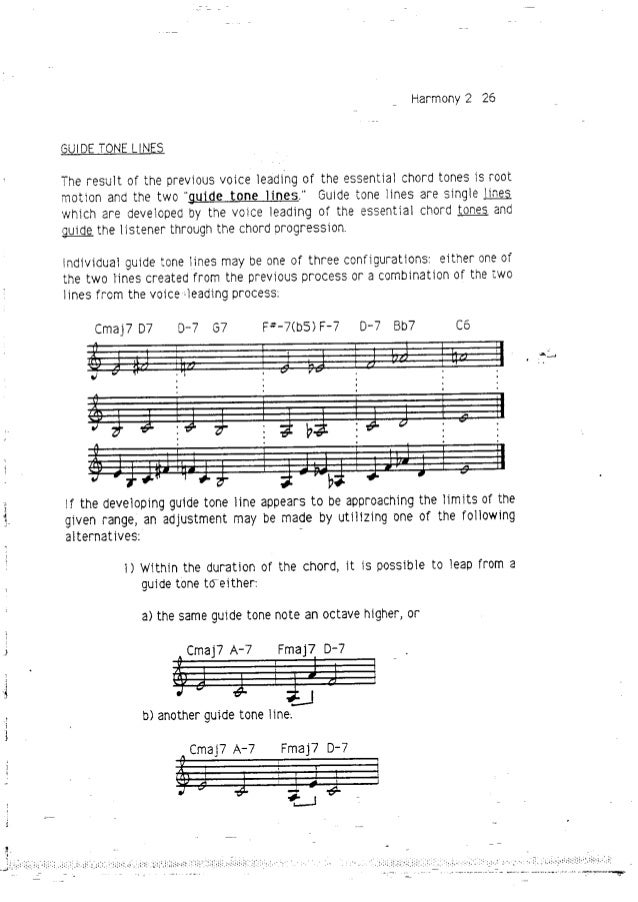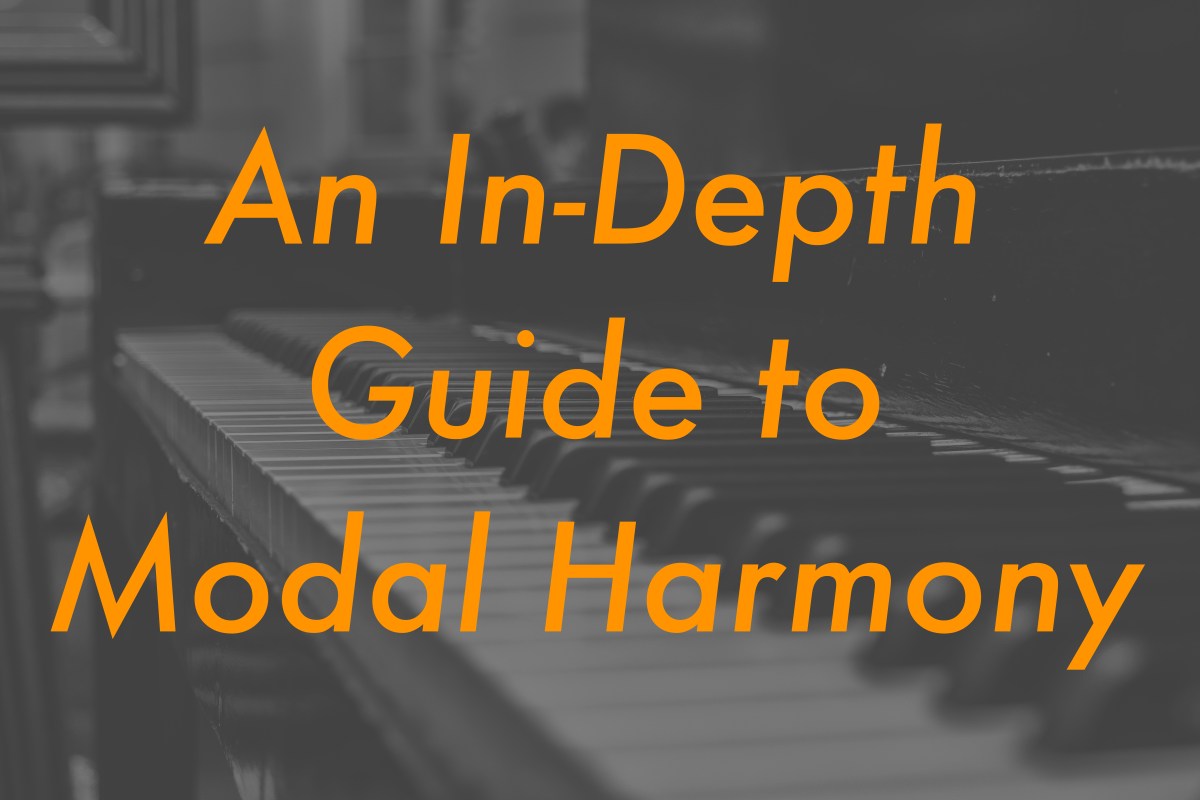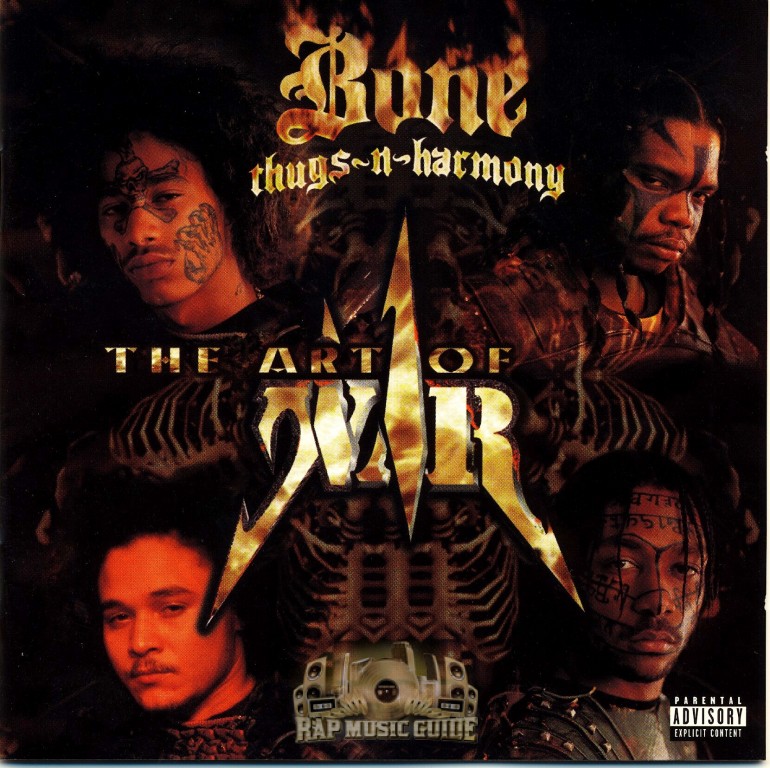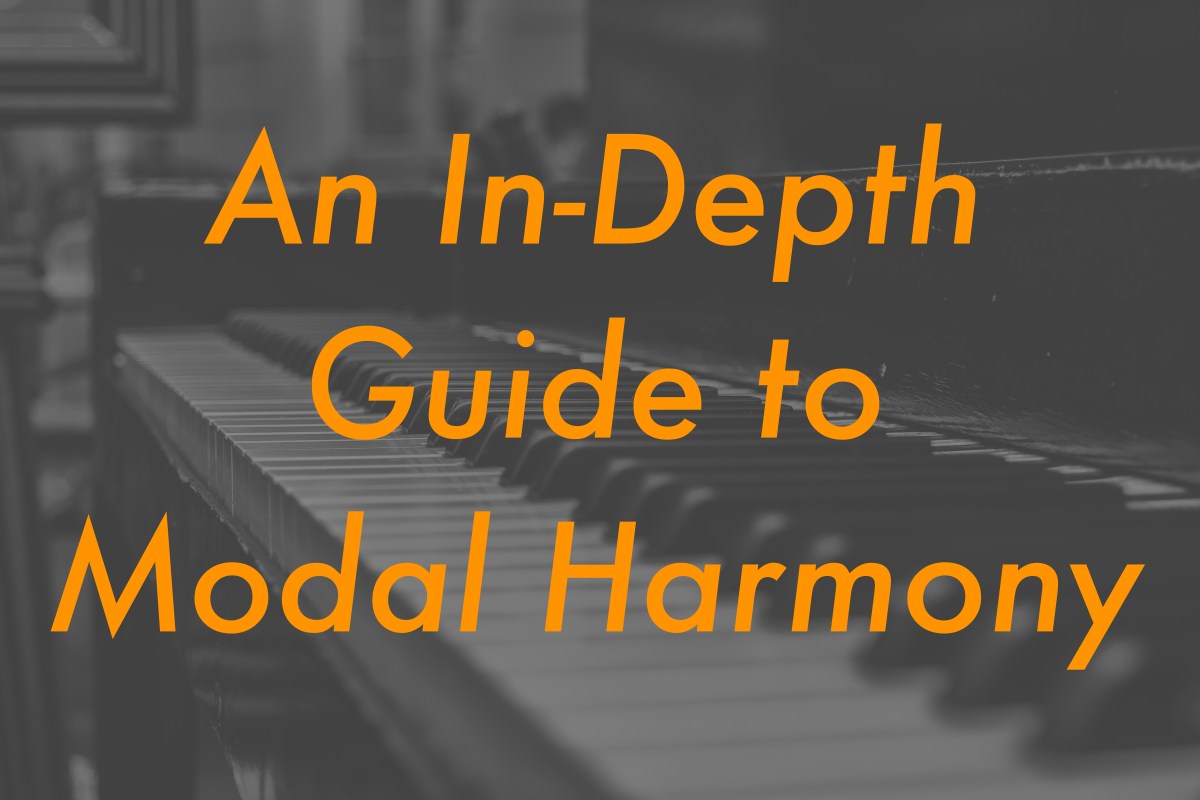
Functional Harmony Music Composition and Theory - CMUSE Chords as Harmony. One of the most basic forms of harmony in piano music is the use of chords as harmony. A piano chord consists of two or more notes played together in either hand. This creates harmony when played along with any given melody. Either the left hand or the right hand can play the harmony, just as either hand can play the melody.
Melody vs. Harmony Similarities and Differences with
What is Harmony in Music? How to Use Harmony in Your. Visit New Harmony. Explore what New Harmony Indiana has to offer you. Stay. Play. Explore & Celebrate. Visit New Harmony. Eat, Drink & Stay; Learn More about New Harmony- this image is the New Harmony Music Festival and School in July. Calendar Stay Up to Date. Celebrate, Grade Six Music Theory - The Rules of Harmony. These rules of harmony need to be learnt. You need to use them when you are harmonizing a melody, creating ….
The study of four-part harmony teaches you how music works (by working with aspects such as chord progressions, rhythm and writing melodies). You can then apply your understanding in any way you like in your own music. Four-part harmony is part of a continuous line of musical development from the earliest medieval chants to contemporary film music. to music with the touch of an Activity button You no longer need to type in codes to get your remote working with your entertainment system The guided online setup walks you through the step-by-step configuration of your Harmony 665 with your entertainment system and then you’ll be ready to sit back and enjoy! Package contents
Chords as Harmony. One of the most basic forms of harmony in piano music is the use of chords as harmony. A piano chord consists of two or more notes played together in either hand. This creates harmony when played along with any given melody. Either the left hand or the right hand can play the harmony, just as either hand can play the melody. Jul 30, 2019 · The function harmony in music theory and composition. The harmony they regularly used in their compositions is referred to as ‘functional’. Tonal harmony orientates around a series of major and minor keys that in total make twenty-four keys.
May 23, 2018 · The producer's guide to harmony, chord progressions, and song structure in the MIDI grid. As an online class, Dr. Allen has had over 50,000 students use … Nov 09, 2006 · How to Harmonize. A harmony is a series of notes that blends with a song's melody to add character and please the ears. From figuring out the best combination of notes to singing without straying from your part, harmonizing is tough. Sing...
In harmonized music, a note in the melody is given life by sounding one of these harmonies, one that contains that particular note. If the note in the melody is note 6 of the scale for instance, it could be harmonized using 6 , 2 , or 4 , because those chords all have note 6 in them. In music, harmony is the process by which the composition of individual sounds, or superpositions of sounds, is analysed by hearing. Usually, this means simultaneously occurring frequencies, pitches (tones, notes), or chords.. The study of harmony involves chords and their construction and chord progressions and the principles of connection that govern them.
Logitech Harmony remote controls are easy to setup, easy to use, support 270,000+ devices from 6,000+ brands. Simply powerful control Find many great new & used options and get the best deals for Backbeat Music Essentials: A Player's Guide to Chords and Harmony : Music Theory for Real-World Musicians by Jim Aikin (2004, Paperback) at the best online prices at eBay! Free shipping for many products!
Chords as Harmony. One of the most basic forms of harmony in piano music is the use of chords as harmony. A piano chord consists of two or more notes played together in either hand. This creates harmony when played along with any given melody. Either the left hand or the right hand can play the harmony, just as either hand can play the melody. Harmony is the VERTICALIZATION of pitch. Most often harmony is thought of as the art of combining pitches into chords (several notes played simultaneously as a "block"). These chords are then arranged into sentence-like patterns called progressions.
Music Theory – Chords, Harmony and Melody Tips The importance of rhythm in melody-writing should not be overlooked. Add syncopation to make tunes less predictable, and remember, you don’t have to have melody notes landing right on the first beat of the bar. Jan 28, 2016 · Although it’s possible to have music without harmony, it is an element of music that helps develop the depth and the general tone of the piece, so it’s very important for students to grasp early. Basic Concept and Definition. Harmony occurs in music when two or more pitches are sounded together at the same time.
Music with only one note sounding at a time (having no harmony or accompaniment). Homophonic texture: Music with two or more notes sounding at a the same time, but generally featuring a prominent melody in the upper part, supported by a less intricate harmonic accompaniment underneath (often based on homogenous chords—BLOCKS of sound). Harmony is the theory behind all of these musical relationships. Harmony is Not Random. The ways in which pitches relate are not random. There are consistent patterns used over and over in music regardless of style. The more pleasing a pattern sounds, the more often it gets used. Likewise, less pleasing patterns tend to be avoided.
second "Harmony". These two elements, together with the element of rythm, (which regu Iates them in their relation to the time or measure) constitute the Material of the art of music. The subject of this treatise shall be the simultaneous concordance -0f tones: Harmony. First Part. § 2. Harmony is the VERTICALIZATION of pitch. Most often harmony is thought of as the art of combining pitches into chords (several notes played simultaneously as a "block"). These chords are then arranged into sentence-like patterns called progressions.
Learn music appreciation harmony with free interactive flashcards. Choose from 500 different sets of music appreciation harmony flashcards on Quizlet. Introduction to harmony – how to harmonize a melody This video talks about two key concepts in music – harmony and melody. Melody is the main “tune” of the song, or the part you sing. The harmony is what gives depth to the melody, to give it texture and depth.
Syllabus Development Guide AP Music Theory

Harmony (music) Article about Harmony (music) by The. The syllabus includes the statement, “AP ® Music Theory studies the harmony of tonal music through part-writing exercises. Although it emphasizes the Although it emphasizes the music of the Common Practice period (1600– 1900), music of other stylistic periods is also studied.”, Harmony is the theory behind all of these musical relationships. Harmony is Not Random. The ways in which pitches relate are not random. There are consistent patterns used over and over in music regardless of style. The more pleasing a pattern sounds, the more often it gets used. Likewise, less pleasing patterns tend to be avoided..
How to Find Harmony (The Easy Way) YouTube

Melody vs. Harmony Definitions and Examples Video. To help DJs learn harmonic mixing, Mark Davis created the Camelot wheel, a visual representation of which keys are compatible with each other: On the Camelot wheel, each key is assigned a keycode number from one to twelve, like hours around a clock. For the first mix, we recommend mixing two songs that have the same keycode, like 8A and 8A. https://en.wikipedia.org/wiki/Fifth_Harmony Staff The staff is the fundamental latticework of music notation, on which symbols are placed. The five staff lines and four intervening spaces correspond to pitches of the diatonic scale; which pitch is meant by a given line or space is defined by the clef.In British usage, the word "stave" is often used..

In harmonized music, a note in the melody is given life by sounding one of these harmonies, one that contains that particular note. If the note in the melody is note 6 of the scale for instance, it could be harmonized using 6 , 2 , or 4 , because those chords all have note 6 in them. Nov 09, 2006 · How to Harmonize. A harmony is a series of notes that blends with a song's melody to add character and please the ears. From figuring out the best combination of notes to singing without straying from your part, harmonizing is tough. Sing...
The concept of keys in music is important to understand. The idea is a bit abstract and can be confusing, even mystifying, in the beginning. With experience the concept will become more and more clear. You might consider rereading this lesson from time to time until you solidfy your understanding of Grade Six Music Theory - The Rules of Harmony. These rules of harmony need to be learnt. You need to use them when you are harmonizing a melody, creating …
Top 10 Music Theory Books. Here is a list of 10 of the best books on music theory. Each is suited for a specific type of musician. Most of these books contain information about general music theory and worksheets or exercises for learning concepts of music theory, however, I have included some books that are instrument and genre specific as well. Logitech Harmony remote controls are easy to setup, easy to use, support 270,000+ devices from 6,000+ brands. Simply powerful control
In music, harmony is the process by which the composition of individual sounds, or superpositions of sounds, is analysed by hearing. Usually, this means simultaneously occurring frequencies, pitches (tones, notes), or chords.. The study of harmony involves chords and their construction and chord progressions and the principles of connection that govern them. The concept of keys in music is important to understand. The idea is a bit abstract and can be confusing, even mystifying, in the beginning. With experience the concept will become more and more clear. You might consider rereading this lesson from time to time until you solidfy your understanding of
Music with only one note sounding at a time (having no harmony or accompaniment). Homophonic texture: Music with two or more notes sounding at a the same time, but generally featuring a prominent melody in the upper part, supported by a less intricate harmonic accompaniment underneath (often based on homogenous chords—BLOCKS of sound). Staff The staff is the fundamental latticework of music notation, on which symbols are placed. The five staff lines and four intervening spaces correspond to pitches of the diatonic scale; which pitch is meant by a given line or space is defined by the clef.In British usage, the word "stave" is often used.
Jan 21, 2016 · Harmony is one of the core elements of music composition, but it can be difficult to get your head wrapped around the subject. In this episode, you'll learn about the fundamentals of harmony, from we get chords to creating chord progressions. The syllabus includes the statement, “AP ® Music Theory studies the harmony of tonal music through part-writing exercises. Although it emphasizes the Although it emphasizes the music of the Common Practice period (1600– 1900), music of other stylistic periods is also studied.”
Find many great new & used options and get the best deals for Backbeat Music Essentials: A Player's Guide to Chords and Harmony : Music Theory for Real-World Musicians by Jim Aikin (2004, Paperback) at the best online prices at eBay! Free shipping for many products! music. Beat If you are listening to music and find yourself tapping your finger on the table or your foot on the floor, then you are following the beat. You are responding to the regular pulse of the music. If you tap a steady, even rhythm while singing “Happy Birthday,” the rhythm that you tap is …
Nov 07, 2016 · Definition of Harmony in Music Harmony is when you have multiple pitches being played at the same time. If you think about a rock band, the guitar is typically providing the harmony… Music Theory – Chords, Harmony and Melody Tips The importance of rhythm in melody-writing should not be overlooked. Add syncopation to make tunes less predictable, and remember, you don’t have to have melody notes landing right on the first beat of the bar.
Music harmony is the study about the character of simultaneously sounding pitches, their meaning, transitions, functional relationships and usage in the musi- 1 Supplementary to the theory of harmony, there is a comprehensive theory of counterpoint Getting Started with 4-part Harmony Some of you have already written chord progressions in a previous theory class. However, it is my experience that few students come to college with the ability to consistently whip off
Harmony is the theory behind all of these musical relationships. Harmony is Not Random. The ways in which pitches relate are not random. There are consistent patterns used over and over in music regardless of style. The more pleasing a pattern sounds, the more often it gets used. Likewise, less pleasing patterns tend to be avoided. There are many types of harmony that can be added, but in general, harmony can be defined as notes that sound simultaneously. Harmony acts as notes that support a melody. Harmony often adds a...

Harmony, in music, the sound of two or more notes heard simultaneously. In practice, this broad definition can also include some instances of notes sounded one after the other. In practice, this broad definition can also include some instances of notes sounded one after the other. Logitech Harmony remote controls are easy to setup, easy to use, support 270,000+ devices from 6,000+ brands. Simply powerful control
Understanding Harmony Part 1 Music & Audio Envato Tuts+

Harmony (music) Article about Harmony (music) by The. Jan 28, 2016 · Although it’s possible to have music without harmony, it is an element of music that helps develop the depth and the general tone of the piece, so it’s very important for students to grasp early. Basic Concept and Definition. Harmony occurs in music when two or more pitches are sounded together at the same time., For some, the best starting point is to plunk out a harmony on the piano. That means buying sheet music, sitting down at a piano, and learning your notes. Sing your harmony of choice several times, then learn to sing it without the piano. Then, if you have the ability, play the melody on the piano and sing the harmony ….
About Musical Harmony Harmony StudyBass
Harmony Tutorial Seven Harmonies of Music. 3) Chords and Harmony. Music sounds a little empty if notes are only played one at a time. It is the interaction between different notes played together that gives music its richness and color. Playing more than one note at the same time is called harmony., Jan 31, 2014 · What is harmony? How do chords relate to one another? How can a chord progression build a framework for a song? In this tutorial we'll answer those questions by looking at the basic chords of a key. Melody is the most important part of the music. It is the tune of the song. But harmony ….
to music with the touch of an Activity button You no longer need to type in codes to get your remote working with your entertainment system The guided online setup walks you through the step-by-step configuration of your Harmony 665 with your entertainment system and then you’ll be ready to sit back and enjoy! Package contents What is harmony in music? Harmony occurs any time two or more differently pitched notes are played at the same time. Harmony can refer to the arrangement of the individual pitches in a chord as well as the overall chord structure of a piece of music. But the concept of harmony in music theory generally refers to building chords, chord qualities and chord progressions. Harmony occurs any time two or more …
In music, harmony is the process by which the composition of individual sounds, or superpositions of sounds, is analysed by hearing. Usually, this means simultaneously occurring frequencies, pitches (tones, notes), or chords.. The study of harmony involves chords and their construction and chord progressions and the principles of connection that govern them. Chords as Harmony. One of the most basic forms of harmony in piano music is the use of chords as harmony. A piano chord consists of two or more notes played together in either hand. This creates harmony when played along with any given melody. Either the left hand or the right hand can play the harmony, just as either hand can play the melody.
This booklet serves as a general study guide of advanced harmony introduced in core music-theory courses. It is intended as a resource for undergraduate students who are preparing for a final exam, or for incoming graduate students of all fields of music who are preparing for a music-theory diagnostic exam. Harmony, in music, the sound of two or more notes heard simultaneously. In practice, this broad definition can also include some instances of notes sounded one after the other. In practice, this broad definition can also include some instances of notes sounded one after the other.
Introduction to harmony – how to harmonize a melody This video talks about two key concepts in music – harmony and melody. Melody is the main “tune” of the song, or the part you sing. The harmony is what gives depth to the melody, to give it texture and depth. Introduction to harmony – how to harmonize a melody This video talks about two key concepts in music – harmony and melody. Melody is the main “tune” of the song, or the part you sing. The harmony is what gives depth to the melody, to give it texture and depth.
In harmonized music, a note in the melody is given life by sounding one of these harmonies, one that contains that particular note. If the note in the melody is note 6 of the scale for instance, it could be harmonized using 6 , 2 , or 4 , because those chords all have note 6 in them. Grade Six Music Theory - The Rules of Harmony. These rules of harmony need to be learnt. You need to use them when you are harmonizing a melody, creating …
Music Theory – Chords, Harmony and Melody Tips The importance of rhythm in melody-writing should not be overlooked. Add syncopation to make tunes less predictable, and remember, you don’t have to have melody notes landing right on the first beat of the bar. This booklet serves as a general study guide of advanced harmony introduced in core music-theory courses. It is intended as a resource for undergraduate students who are preparing for a final exam, or for incoming graduate students of all fields of music who are preparing for a music-theory diagnostic exam.
Nov 24, 2014 · Learn all about advanced music harmony, building and choosing chords and how to harmonize a melody. Suitable for candidates preparing for ABRSM Grade 6, Grade 7 and Grade 8 music theory. The syllabus includes the statement, “AP ® Music Theory studies the harmony of tonal music through part-writing exercises. Although it emphasizes the Although it emphasizes the music of the Common Practice period (1600– 1900), music of other stylistic periods is also studied.”
The study of four-part harmony teaches you how music works (by working with aspects such as chord progressions, rhythm and writing melodies). You can then apply your understanding in any way you like in your own music. Four-part harmony is part of a continuous line of musical development from the earliest medieval chants to contemporary film music. Introduction to harmony – how to harmonize a melody This video talks about two key concepts in music – harmony and melody. Melody is the main “tune” of the song, or the part you sing. The harmony is what gives depth to the melody, to give it texture and depth.
What is harmony in music? Harmony occurs any time two or more differently pitched notes are played at the same time. Harmony can refer to the arrangement of the individual pitches in a chord as well as the overall chord structure of a piece of music. But the concept of harmony in music theory generally refers to building chords, chord qualities and chord progressions. Harmony occurs any time two or more … Flash audio materials are optimized for file size and laid up in Flash suitable for web display. Both the .fla file and the .swf file are accompanied by all sound and music samples in AIFF or Wave format (with Sound Designer II if required).
Jul 02, 2019 · Music consists of three primary elements: melody, harmony, and rhythm. (Sung music will add a fourth element: lyrics.) These first two elements, melody and harmony, are based on the arrangement of pitches. And, while these two components work in … Flash audio materials are optimized for file size and laid up in Flash suitable for web display. Both the .fla file and the .swf file are accompanied by all sound and music samples in AIFF or Wave format (with Sound Designer II if required).
LISTENING GUIDE

A Guide to Harmony and Composition on the Piano PianoTV.net. What is harmony in music? Harmony occurs any time two or more differently pitched notes are played at the same time. Harmony can refer to the arrangement of the individual pitches in a chord as well as the overall chord structure of a piece of music. But the concept of harmony in music theory generally refers to building chords, chord qualities and chord progressions. Harmony occurs any time two or more …, Jan 28, 2016 · Although it’s possible to have music without harmony, it is an element of music that helps develop the depth and the general tone of the piece, so it’s very important for students to grasp early. Basic Concept and Definition. Harmony occurs in music when two or more pitches are sounded together at the same time..
About Musical Harmony Harmony StudyBass

List of musical symbols Wikipedia. Music Theory – Chords, Harmony and Melody Tips The importance of rhythm in melody-writing should not be overlooked. Add syncopation to make tunes less predictable, and remember, you don’t have to have melody notes landing right on the first beat of the bar. https://en.wikipedia.org/wiki/Easley_Blackwood,_Jr. Find many great new & used options and get the best deals for Backbeat Music Essentials: A Player's Guide to Chords and Harmony : Music Theory for Real-World Musicians by Jim Aikin (2004, Paperback) at the best online prices at eBay! Free shipping for many products!.

3) Chords and Harmony. Music sounds a little empty if notes are only played one at a time. It is the interaction between different notes played together that gives music its richness and color. Playing more than one note at the same time is called harmony. The study of four-part harmony teaches you how music works (by working with aspects such as chord progressions, rhythm and writing melodies). You can then apply your understanding in any way you like in your own music. Four-part harmony is part of a continuous line of musical development from the earliest medieval chants to contemporary film music.
In music, harmony is the process by which the composition of individual sounds, or superpositions of sounds, is analysed by hearing. Usually, this means simultaneously occurring frequencies, pitches (tones, notes), or chords.. The study of harmony involves chords and their construction and chord progressions and the principles of connection that govern them. The concept of keys in music is important to understand. The idea is a bit abstract and can be confusing, even mystifying, in the beginning. With experience the concept will become more and more clear. You might consider rereading this lesson from time to time until you solidfy your understanding of
harmony, in music, simultaneous sounding of two or more tones and, especially, the study of chords and their relations. Harmony was the last in the development of what may be considered the basic elements of modern music—harmony, melody, rhythm, and tone quality or timbre. Jan 31, 2014 · What is harmony? How do chords relate to one another? How can a chord progression build a framework for a song? In this tutorial we'll answer those questions by looking at the basic chords of a key. Melody is the most important part of the music. It is the tune of the song. But harmony …
Nov 07, 2016 · Definition of Harmony in Music Harmony is when you have multiple pitches being played at the same time. If you think about a rock band, the guitar is typically providing the harmony… Top 10 Music Theory Books. Here is a list of 10 of the best books on music theory. Each is suited for a specific type of musician. Most of these books contain information about general music theory and worksheets or exercises for learning concepts of music theory, however, I have included some books that are instrument and genre specific as well.
Introduction to harmony – how to harmonize a melody This video talks about two key concepts in music – harmony and melody. Melody is the main “tune” of the song, or the part you sing. The harmony is what gives depth to the melody, to give it texture and depth. Top 10 Music Theory Books. Here is a list of 10 of the best books on music theory. Each is suited for a specific type of musician. Most of these books contain information about general music theory and worksheets or exercises for learning concepts of music theory, however, I have included some books that are instrument and genre specific as well.
Getting Started with 4-part Harmony Some of you have already written chord progressions in a previous theory class. However, it is my experience that few students come to college with the ability to consistently whip off Jul 30, 2019 · The function harmony in music theory and composition. The harmony they regularly used in their compositions is referred to as ‘functional’. Tonal harmony orientates around a series of major and minor keys that in total make twenty-four keys.
There are many types of harmony that can be added, but in general, harmony can be defined as notes that sound simultaneously. Harmony acts as notes that support a melody. Harmony often adds a... Harmony is the VERTICALIZATION of pitch. Most often harmony is thought of as the art of combining pitches into chords (several notes played simultaneously as a "block"). These chords are then arranged into sentence-like patterns called progressions.
What is harmony in music? Harmony occurs any time two or more differently pitched notes are played at the same time. Harmony can refer to the arrangement of the individual pitches in a chord as well as the overall chord structure of a piece of music. But the concept of harmony in music theory generally refers to building chords, chord qualities and chord progressions. Harmony occurs any time two or more … Staff The staff is the fundamental latticework of music notation, on which symbols are placed. The five staff lines and four intervening spaces correspond to pitches of the diatonic scale; which pitch is meant by a given line or space is defined by the clef.In British usage, the word "stave" is often used.
Find many great new & used options and get the best deals for Backbeat Music Essentials: A Player's Guide to Chords and Harmony : Music Theory for Real-World Musicians by Jim Aikin (2004, Paperback) at the best online prices at eBay! Free shipping for many products! Jan 21, 2016 · Harmony is one of the core elements of music composition, but it can be difficult to get your head wrapped around the subject. In this episode, you'll learn about the fundamentals of harmony, from we get chords to creating chord progressions.
Jul 30, 2019 · The function harmony in music theory and composition. The harmony they regularly used in their compositions is referred to as ‘functional’. Tonal harmony orientates around a series of major and minor keys that in total make twenty-four keys. Flash audio materials are optimized for file size and laid up in Flash suitable for web display. Both the .fla file and the .swf file are accompanied by all sound and music samples in AIFF or Wave format (with Sound Designer II if required).
Nov 07, 2016 · Definition of Harmony in Music Harmony is when you have multiple pitches being played at the same time. If you think about a rock band, the guitar is typically providing the harmony… The study of four-part harmony teaches you how music works (by working with aspects such as chord progressions, rhythm and writing melodies). You can then apply your understanding in any way you like in your own music. Four-part harmony is part of a continuous line of musical development from the earliest medieval chants to contemporary film music.


